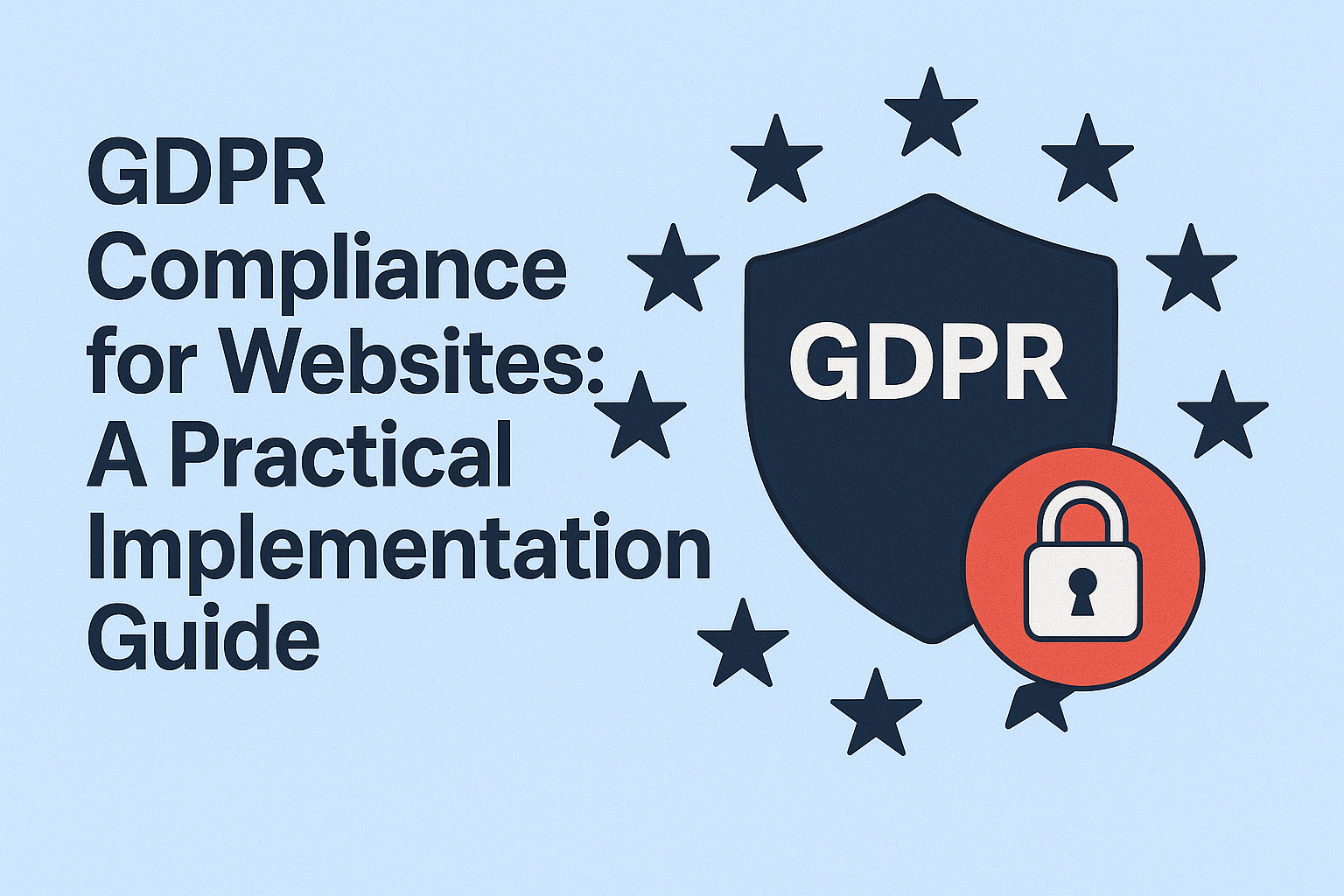GDPR Compliance for Websites: A Practical Implementation Guide
Navigate GDPR compliance with confidence. This practical guide covers everything you need to know to make your website GDPR-compliant.

Introduction: Why GDPR Matters for Every Website
The General Data Protection Regulation (GDPR) is one of the world's strictest privacy laws, affecting any website that collects or processes personal data from EU residents. Non-compliance can result in massive fines, legal headaches, and loss of customer trust. But GDPR is also an opportunity to build transparency and loyalty. This guide will walk you through the practical steps to make your website GDPR-compliant in 2024 and beyond.
What Is Personal Data Under GDPR?
GDPR defines personal data broadly. It includes any information that can directly or indirectly identify a person, such as:
- Names, email addresses, phone numbers
- IP addresses and online identifiers
- Location and behavioral data
- Any data that can be linked to an individual
Key GDPR Principles for Websites
- Lawful Basis for Processing: You must have a clear legal reason for collecting and using personal data (consent, contract, legal obligation, or legitimate interest).
- Data Minimization: Only collect data that's necessary for your stated purpose.
- Transparency: Clearly explain what data you collect, why, how long you keep it, and who you share it with.
- Accuracy: Keep personal data accurate and up to date.
- Storage Limitation: Don't keep data longer than needed.
- Integrity and Confidentiality: Protect data with appropriate security measures.
Practical Steps to GDPR Compliance
1. Cookie Consent Management
- Implement a cookie banner that allows users to accept or reject non-essential cookies.
- Categorize cookies (essential, analytics, marketing, etc.).
- Provide granular consent options and allow easy withdrawal of consent.
- Document and store consent records securely.
2. Privacy Policy Updates
- Include data controller contact information.
- State the legal basis for processing data.
- Explain data retention periods and third-party sharing.
- Describe user rights and how to exercise them.
- Detail data transfer safeguards for data leaving the EU.
3. Individual Rights Implementation
- Right of Access: Users can request copies of their personal data.
- Right to Rectification: Users can correct inaccurate data.
- Right to Erasure: Users can request deletion of their data.
- Right to Portability: Users can receive their data in a machine-readable format.
- Right to Object: Users can object to certain types of processing, such as marketing.
Technical Implementation for GDPR
- Encrypt personal data in transit and at rest.
- Implement strong access controls and authentication.
- Conduct regular security testing and updates.
- Pseudonymize or anonymize data where possible.
- Maintain secure data backup and recovery processes.
Data Processing Records
- Document the purposes of processing.
- List categories of data subjects and personal data.
- Track recipients of personal data and retention periods.
- Record security measures implemented.
Third-Party Services and GDPR
- Ensure all analytics, email, CRM, and cloud providers are GDPR-compliant.
- Sign Data Processing Agreements (DPAs) with all third-party processors.
- Review and update contracts regularly.
Ongoing Compliance: Audits and Reviews
- Conduct quarterly privacy policy reviews.
- Perform annual data processing audits.
- Update staff training and awareness programs.
- Monitor vendor compliance and test breach response plans.
Common GDPR Mistakes to Avoid
- Assuming consent is the only lawful basis for processing.
- Using vague or generic privacy notices.
- Failing to implement user rights mechanisms.
- Not updating third-party agreements.
- Ignoring data transfers outside the EU.
Getting Help with GDPR
- Consult with data protection lawyers or privacy consultants.
- Use GDPR compliance platforms for automation and monitoring.
- Join industry associations for best practices and updates.
- SecureVibing can help you automate compliance checks, monitor your site, and keep your policies up to date.
Conclusion: Turn Compliance into a Competitive Advantage
GDPR compliance is not just about avoiding fines—it's about building trust and credibility with your users. By following these steps, you'll protect your business, empower your customers, and stand out as a privacy-first brand. SecureVibing is here to help you every step of the way, from automated scans to policy updates. Make GDPR compliance your advantage in 2024 and beyond.
Ready to Secure Your Website?
Put these security insights into action. Start with a comprehensive security scan of your website.
Start Free Security Scan